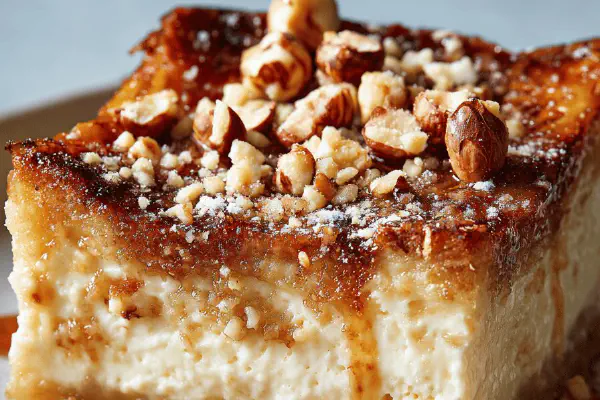Featured Recipe
Lard Biscuits Upgrade

By Kate
"
Biscuits made with lard for flaky texture, swapping half the flour with whole wheat for a nutty bite. Buttermilk turns up tang and tender crumb. Cutting cold lard into flour mimics tiny pockets that steam in the oven. Dough barely kneaded maintains layers, rolled thicker than usual to prevent toughness. Baked on center rack to brown evenly. Watch for golden edges and bouncy tops. Not all milk or flour substitutes behave same; know your brands. Season salt instead of plain. A bit more baking powder for lift, less salt and emulsified fat for easy cutting helps. Simple tweaks with reliable results for a humble classic with a twist.
"
Prep:
25 min
Cook:
15 min
Total:
40 min
Serves:
10 servings
biscuits
baking
Southern food
easy recipes
Introduction
Lard biscuits don’t mess around. Cold fat cut into flour creates pockets of fat that steam and puff up to flaky layers. Buttermilk adds tang and reacts with baking powder for that perfect lift. Swapping some white for whole wheat flour pushes complexity without sacrificing fluff. Quick kneads avoid toughening—gluten’s a foe in this battle. Patting out dough thicker than usual protects moisture. Oven placement and subtle seasoning make or break biscuits. This is about technique, timing, and reading dough not clocks. Master these, and biscuits come out golden, tender, with that easy confident crumb. Cracks form like old country roads, a sure sign you handled dough right. Texture, aroma, and sound tell you when to pull the tray. No guesswork. Just skill.
Ingredients
About the ingredients
Lard cold and chunked correctly is essential for layering. Whole wheat flour adds chew and earthy notes but will change how much liquid you need—whole wheat absorbs more, so add buttermilk gradually. Buttermilk’s acidity cuts flour toughness and creates a moist fluffy crumb. If swapping milk types, use full-fat versions for richer flavor and texture. Seasoned salt is a shortcut to depth but use plain salt + extras if unavailable. Keep fat cold to avoid melting into flour before baking, which ruins flake and puff. Rolling out dough to height keeps them from turning thin and brittle. Keep cutter floured and don’t twist when cutting to get sharp edges. These edges rise better and don’t seal shut.
Method
Technique Tips
Start with the dry mix, whisking thoroughly to distribute leavening evenly. Cutting in cold fat quickly prevents melting but keep comfortable speed—it’s a balance of texture. Buttermilk poured gradually prevents overhydrating. Dough should not cling excessively but hold together well. Overwork dough and gluten tightens, causing toughness, so knead minimally and gently in bowl. Pat dough gently, don’t over-roll or stretch; tension tightens dough, reducing rise. Cut biscuits straight down and set edges touching for rise support. Bake at lower end of heat for browning without burning. Visual cues like edges saffron-colored, rising tops that bounce back on light press tell doneness better than time alone. Pull too early, tough center. Pull too late, dry biscuit. Rotate pans at minute 7 if oven heat uneven or if you see color differences. Serve immediately or rewarm carefully; stale biscuits won’t soften again. Avoid flipping or tearing during transfer; they’re fragile. Store leftovers loosely covered wrapped; refrigeration stiffens fats, reheat wrapped in damp cloth to revive softness.
Chef's Notes
- 💡 Use cold lard; key for flaky layers. Too warm, dense biscuits. Cutting into dry mix creates pockets—critical.
- 💡 Gradually add buttermilk. Avoid overhydrating dough; shaggy is good. Total consistency helps; watch texture closely.
- 💡 Cut biscuits straight down; don’t twist. Twisting seals edges, hinders rise. Flour cutter well; keep shapes sharp.
- 💡 Check for rising tops and golden edges. Color cues matter. Listen for crackle as heat hits fat; aim for pale gold.
- 💡 Store leftovers loosely wrapped. Refrigerate, biscuits turn hard. Reheat wrapped in damp towel for softening.
Kitchen Wisdom
How to fix sticky dough?
Add small flour bursts. Too dry? Splash in more buttermilk. Adjust until manageable.
Best way to store biscuits?
Loose covering, avoid tight wraps. Can freeze, then reheat. Not all techniques work. Adjust.
What if biscuits brown unevenly?
Rotate pan halfway through. Keeps color consistent. Watch oven heat closely.
Alternatives for lard or buttermilk?
Use regular shortening if lard’s out. Milk with vinegar as buttermilk sub.



